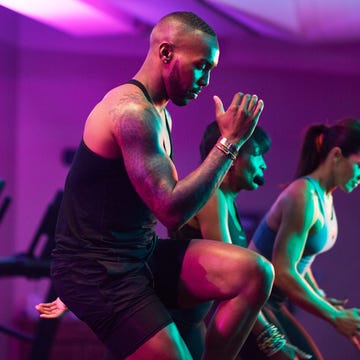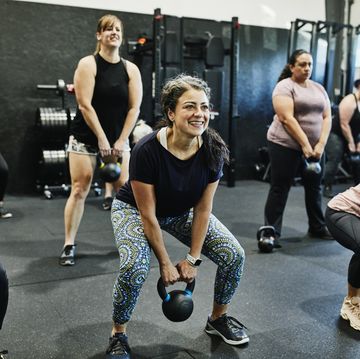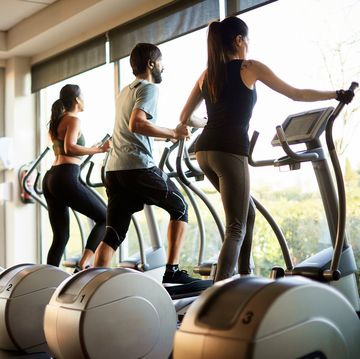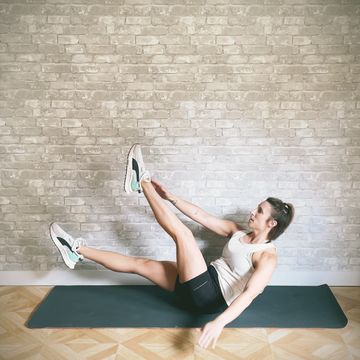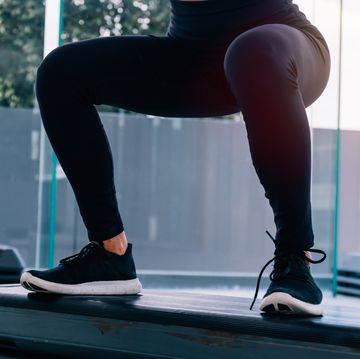The glutes are the biggest muscle group in the body – and arguably the most important for runners. Comprising the gluteus maximus, gluteus medius and gluteus minimus, they are responsible for keeping your hips and pelvis stable and for propelling you forward when you run. Weak glutes, meanwhile, are often the source of running injuries. For example, they can lead to an anterior pelvic tilt, where your pelvis is rotated forward and your spine is forced to curve, which can often lead to knee, hip and IT band injuries.
Strong glutes are an essential part of good running form, with a 2021 study even finding that increasing the size of the gluteus maximus results in improved sprint speeds and performance. And the good news? You can easily strengthen your glutes at home, with no equipment. While they may have a funny name, donkey kicks are one of our favourite bodyweight exercises for building more powerful glutes – so here’s how to do them.
What are donkey kicks?
‘Donkey kicks use the gluteus maximus and hamstrings to extend the hip and partially flex the knee, as would happen in the extension phase of the running gait,’ explains Graeme Woodward, a UK Athletics Level 3 performance coach, UKSCA accredited S&C coach and We Run coach for West Yorkshire.
What everyone's reading
‘It also requires stabilisation of the shoulders, pelvis and torso, making it a whole-body exercise,’ continues Woodward. ‘As the gluteus maximus is the most powerful muscle in the body, doing donkey kicks is an effective activation tool. They can be used in running warm-ups and when isolating these muscles in rehab or prehab.
‘Donkey kicks can also be made harder if you use resistance bands and do fewer sets and reps. This will target strength and power qualities which are important when running faster or uphill.’
How to do donkey kicks
Do 20 reps on each leg:
- Get on all fours, with your knees below your hips and wrists below your shoulders.
- With your core engaged, hips and shoulders square to the floor, left leg bent and left foot flexed, slowly lift your left leg until your thigh is parallel to the floor.
- Lower to your starting position.
- If you balance a small bar across the small of your back, you can teach your body to fire the glutes without arching your back in the process.
- If you want to reduce the intensity of donkey kicks, reduce the distance that you move your leg toward the ceiling. To intensify the move, move your leg closer to the ceiling, place a resistance band around your knees or use ankle weights.
Although donkey kicks are an effective exercise, remember to do them as part of a more comprehensive strength training routine that works your glutes alongside other muscles in the body.




